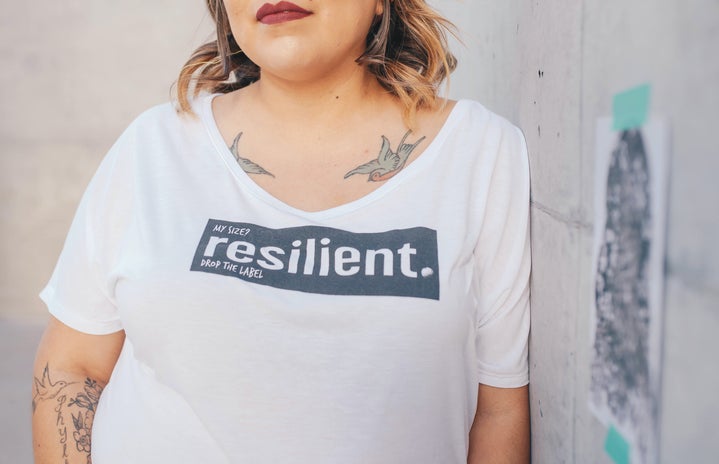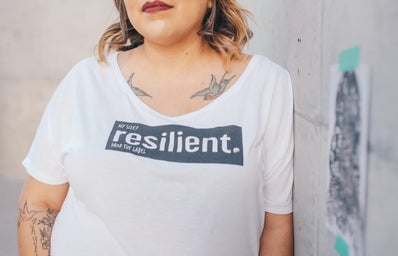Feminism is a movement, but feminism is also a learning process. Feminism —which has grown through many phases, platforms, and messages within the past century—is evolving once more as empowered influencers come to a greater understanding of intersectionality. Intersectionality is a sociological approach to understand systems of oppression by thinking of individual identities (race, gender, socioeconomic status) and recognizing the ways that these individual identities impact and directly affect one another. Intersectionality allows for people of all backgrounds and identities to recognize that their struggles are directly correlated to the oppression of their peers.
Yet with every wave of feminism, there has been major pushback from parties within the movement that have starkly impeded obtaining equity for all identities. For example, most people are unaware that first-wave feminist icons Susan B. Anthony and Elizabeth Cady Stanton were openly against black women obtaining the right to vote. Not to mention both women proposed racist action such as lynching and birth control programs as a means to benefit the white woman’s rise in power to achieve suffrage.
The struggle to obtain contraceptives in the 1970s (which has seen an all too frightening sequel in production with the current administration) saw a distinct fraction in the movement over supporting birth control for women of differing socioeconomic status. Many believed it was fine to find a “solution” to the population crisis, as long as it was for the poor women and not the women of higher social status. Whereas others focused on securing birth control for the well-to-do white woman, disregarding any other identities and their struggles. And although these realizations may be uncomfortable to swallow, the “tarnished” legacy of early waves of feminism must be acknowledged to begin to understand the struggles of women of color and the many other identities previously excluded from feminism.
We are upon yet another crux in the evolution of feminism. Matters of race and socioeconomic status have not been resolved, but these issues have been invoked in sociologic research, policy implementation, and in discrimination prevention. Yet in 2017, a pivotal divide in feminism lies not in matters of race, class, or background, but within the identity of “what makes a woman” itself.
Women are held to an ungodly standard, this we can all acknowledge. As Roxane Gay says in her TEDTalk, “We demand perfection from feminists because we are still fighting for so much, we want so much, we need so damn much. We go far beyond reasonable, constructive criticism, to dissecting any given woman’s feminism, tearing it apart until there’s nothing left. We do not need to do that. Bad feminism — or really, more inclusive feminism — is a starting point.”
But what does inclusive feminism look like? And what does it specifically look like in terms of gender identity? Perhaps it is easiest to first recognize what inclusive feminism is not: it is not trans exclusionary.
A sect of modern feminists have proclaimed, and in a sense, reclaimed the patriarchal ideas of gender expression (especially in displays of femininity) by preaching their support only for “real women”. Now, “real women” could mean a variety of fairly inclusive concepts, but this brand of feminism is focusing on chromosomes and birth certificates to identify their so-called “real women”. These women seek to exclude trans women, non-binary people, and gender non-conforming women from their feminism with the transphobic ideology that “real women” only have XX chromosomes. And this brand of trans exclusionary radical feminism simply doesn’t cut it.
“Gender critical” feminists actively seek to drive trans women away from their feminism by brutal force. This includes, but is not limited to, the allying with neo-nazi hate groups that demonize and murder trans people, attempting to distance trans women from healthcare access, and stripping away vital resources for trans people under the facade of “bettering the female cause”. Many TERFs truly desire for trans people be “eliminated” as they are merely “male supremacists who want to skin real women and wear as their ‘womanly guise’”. TERFs are no better than any other hate group in this country, and therefore, it is up to us to demand that our movements be inclusive. Because if it’s not intersectional, it isn’t feminism.
Intersectional feminism critiques “gender critical feminists” otherwise known as TERFs (trans exclusionary radical feminists) for demeaning one’s identity as a woman to be a binary, unchanging identity.
A nonbinary freshman at the U cites their experience with gender critical feminism stating, “[TERF] says that trans women aren’t women—which is wrong—and can’t participate in feminism. This also often applies to not 100% identifying females like gender fluid, non-binary, or gender queer people. It’s the idea that feminism is only for cis (usually straight) women”. They continue to mention that trans exclusionary feminism has made them feel as if “I couldn’t be a good feminist if I was trans. I thought I wouldn’t be able to support women as much”.
And they’re not alone. Many other students, trans, nonbinary, and cis alike cite their experiences with trans radical exclusionary feminism as having a negative impact upon their own identities, relationships, and interactions with others.
Ermiya Fanaeian, a trans high school senior, remarks the personal affects of trans radical exclusionary feminism makes her “second guess speaking on sexism [she’s] faced” to the looming presence of TERFs within feminist spaces. She tells me of an experience with her fellow trans sister who was openly chastised for speaking on feminism “if she grew up as a man”. Ermiya reflects that this instance “basically told my friend that no matter how many amazing things she brought to the movement, and no matter how knowledgeable she was about feminism, it’s still invalid because of what she was assigned at birth”.
So as we honor Trans Awareness Week, it’s imperative to acknowledge that trans exclusionary feminism is tarnishing and ruining the progress of the entire movement. We cannot simply stand by and continue to support a system which oppresses our trans sisters and nonbinary siblings left and right. We cannot fully understand intersectional issues of domestic violence and sex-based crimes if we do not recognize the 25 heinous murders of transgender people in 2017 alone. In this week, it’s important for activists, especially cisgender activists, to recognize the common microaggressions that slight the trans and non-binary members of our movement.
Now, you may be frantic, wondering if you’ve been contributing to trans radical exclusionary feminism. And like many systems of oppression, it is common to fall into complacency without active engagement and persistent education on the matters at hand. So on one hand, take this moment as a point of reflection: odds are you may have said, heard, or dismissed statements that have invalidated trans and nonbinary people your community. Yet that is not a be all end all. You are learning, and becoming “woke” is a learning process of the impact of our actions and our words in order to better society for all members, not just a stale, pale, and male few.
As gracefully said by Kiman Kaur, a cis senior in Environmental and Gender Studies, “feminism is all about practice. I don’t care about claiming the identity of ‘feminist’ because it’s meaningless without action and without holding ourselves accountable for the pain we cause to others. Feminism is about being free as your whole self without leaving anything behind; it’s about learning all the time and constantly challenging yourself to be a better human”.
So my challenge for you in the tail end of Trans Awareness Week is to stop and think: “When have I contributed to a feminism that excludes my trans sisters?” And from this reflection, pull up your planner and add in a moment to learn more about trans experiences at the LGBT resource center to become more educated on trans issues. Attend the Transgender Day of Remembrance to honor those who have been lost to transphobic violence in our community and communities abroad.
And although many may be adept in the learning process that comes with intersectional feminism, it’s only honest to recognize that for some of us, this may be our first encounter with the intersectionality of gender identity. And that is valid. If this statement resonates with you, I recommend spending some time exploring the linked sources and remembering that having to learn about identities and experiences doesn’t make you a bad activist —bad activism stems from the blatant ignorance and apathy to experiences that differ from one’s own roots. Learning is a pivotal aspect towards progress within all movements for social change.
We can always “be better”, says senior Jessica Valdes, “no one will ever know everything, but you have the opportunity to better yourself every day”. So as we honor Trans Awareness Week, let us pledge to be better. Choose to support organizations that support all of our sisters, not just our cis-ters. Utilize language that includes all womxn, not just those that share similar identities. Let us be grateful for the trans people who have made the revolution in which we are members. And, may we never stop learning and be willing to listen.



